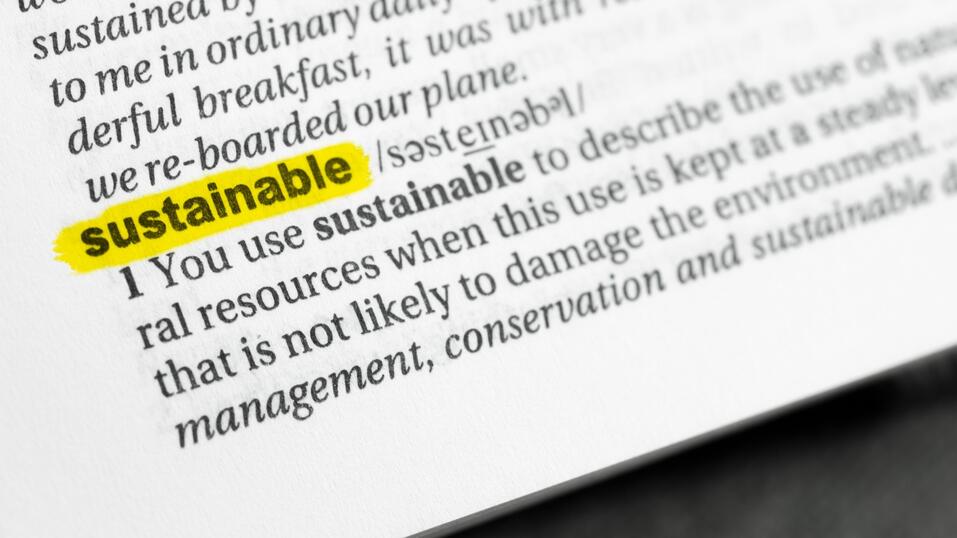Sustainable Lending Framework
Inhalt
The current problem of the EU taxonomy
Although the EU taxonomy for sustainable economic activities establishes a regulatory basis for classifying sustainable business, so far specific criteria for only two of the six environmental goals (climate change mitigation and adaptation) exist. Furthermore, the taxonomy is only designed to apply to activities that already meet the stringent technical screening criteria, and therefore does not serve as a practical benchmark for lending activities intended to promote and support the transition towards a sustainable economy. For instance, there is an ongoing debate on financing nuclear, gas and renewable energy; while social sustainability has only been addressed to date in the form of minimum standards – a social taxonomy has yet to be published. In addition, each market standard - such as the Green Bond Principles and the Social Bond Principles of the International Capital Market Association (ICMA) or the Sustainability Linked Loan Principles of the Loan Market Association (LMA) - only applies to one specific subcategory of sustainability.
Our Sustainable Lending Framework
- 06.06.2022Second Party Opinion Sustainable Lending Framework
Second Party Opinion Sustainable Lending Framework
second-party-opinion-iss-slf-final-en.pdf - 01.06.2022Sustainable Lending Framework
Sustainable Lending Framework
hel_sustainable_lending_framework_en_kurz.pdf
Classification of sustainable financing
These are the gaps that Helaba's Sustainable Lending Framework closes. The framework is the first-ever comprehensive, externally verified classification of sustainable lending activities on the market. In addition to environmental aspects, it also addresses social issues and the dimension of transformation finance. "Our focus is on defining what is meant by sustainable lending activities for the Helaba Group using a broad, credible and transparent classification system," explains Petra Sandner, Helaba's Chief Sustainability Officer.
"Our focus is on defining what is meant by sustainable lending activities for the Helaba Group using a broad, credible and transparent classification system."
Petra Sandner
Chief Sustainability Officer
The framework specifies lending activities that have a positive environmental or social impact or contribute to responsible corporate governance (ESG). "Examples of sustainable financing activities based on the Sustainable Lending Framework are investments in renewable energy or in providing affordable housing, financing for the healthcare and education sectors or for essential public services," says Sandner. The sustainability criteria are enhanced by exclusion criteria that have formed part of Helaba's risk strategy for several years already: Helaba categorically rules out financing activities that cause environmental or social harm, such as loans in connection with coal mining, fracking, nuclear power or private gam-bling.
Press release
- Helaba’s Sustainable Lending Framework closes the gaps in classifying sustainable lending activities
Helaba’s Sustainable Lending Framework closes the gaps in classifying sustainable lending activities
Second Party Opinion of "robust" underscores quality of the framework
The quality of Helaba's framework has been validated by the independent sustainability rating agency ISS ESG, which provided a Second Party Opinion:
“In publishing this framework, Helaba has set out a coherent sustainability strategy and sustainability goals for its entire business and specifically for lending, which is of particular relevance to its business model. [...] The Sustainable Lending Framework establishes a uniform methodology for defining, identifying, measuring, managing and reporting on sustainable lending activities. In this way, it plays a vital role in driving the issue of sustainability for-ward in the bank's core business. [...] Helaba bases its definition of sustainable lending on nationally and internationally recognised standards, frameworks and principles. In this case, these mainly include the EU taxonomy for sustainable economic activities, the EBA's Guide-lines for Loan Origination and Monitoring, the UN Sustainable Development Goals (SDGs), the German Sustainable Development Strategy as well as frameworks for ESG products.”
Ratingagentur ISS ESG
ISS ESG has internationally recognized expertise in all areas related to sustainable and responsible investment.
Driving forward sustainability in the bank’s core business
The Sustainable Lending Framework sets out a comprehensive set of criteria and a uniform, Group-wide methodology for classifying sustainable lending activities in order to further expand its proportion of the bank's total lending volume. It will be applied across the Helaba bank's entire lending business in addition to that of Frankfurter Sparkasse, Landesbausparkasse Hessen-Thüringen (LBS) and Wirtschafts- und Infrastrukturbank Hessen (WIBank). This will ensure there is a consistent approach to lending activities throughout the Helaba Group. As such, the framework is a crucial factor in driving sustainability forward in Helaba's core business.
 Sustainability at a glance
Sustainability at a glanceSustainability at a glance
An overview of important aspects of sustainability at Helaba.
A key building block in the bank’s Sustainable Finance Framework
The financial sector's pivotal role in the transition to a sustainable economy is widely acknowledged. As a public sector bank with a mandate to serve the wider interests of society, Helaba has a special responsibility in this regard. It is able to exert the greatest possible influence on sustainable development through its lending business, one of the bank's most significant business areas.
By applying to the lending business, the Sustainable Lending Framework covers a significant part of the Helaba Group's overall business activities. A Green Bond Framework has been in place since as early as April 2021 for the bank’s bond-related business and other frameworks are currently under development, such as the Sustainable Investment Framework for asset management activities. In this way, an all-encompassing Sustainable Finance Framework is emerging that is specifically tailored to Helaba and its customers and with which Helaba is able to finance those economic activities and sectors that contribute to the sustainable development of the natural environment and society.
More on Sustainable Finance
- All roads lead to sustainability
All roads lead to sustainability
- Sustainable finance and COVID-19: brake or boost?
Sustainable finance and COVID-19: brake or boost?
- Business is booming – and paying its way
Business is booming – and paying its way
- Avoiding greenwashing: substance not soundbites
Avoiding greenwashing: substance not soundbites
What is sustainable finance?
Key terms associated with the issues of sustainability and green finance - explained in a clear and straightforward way.



